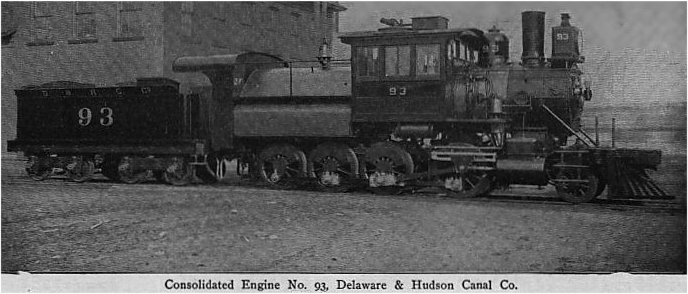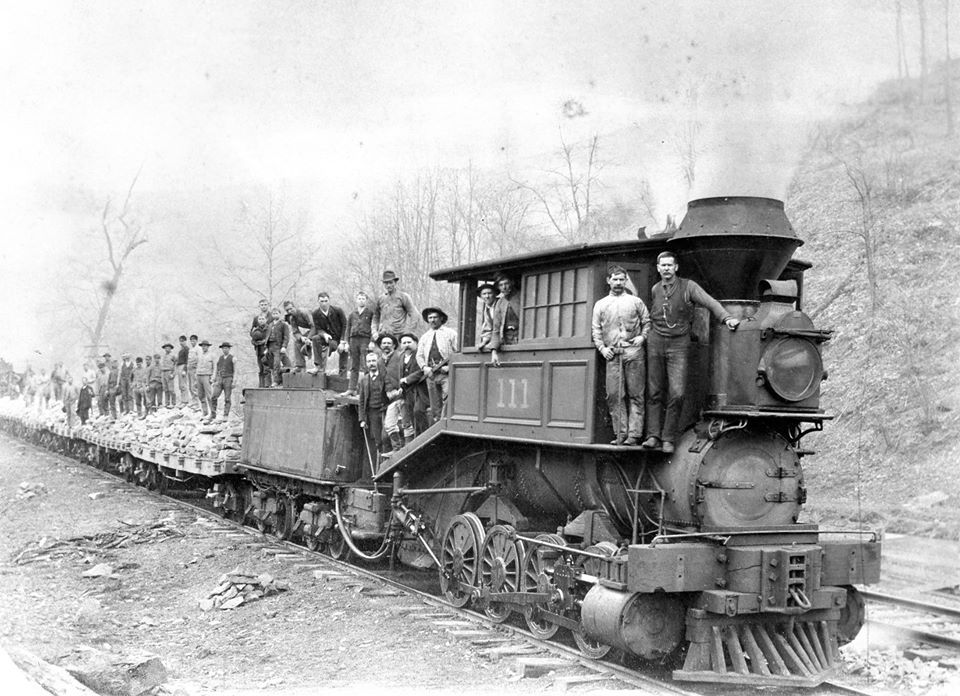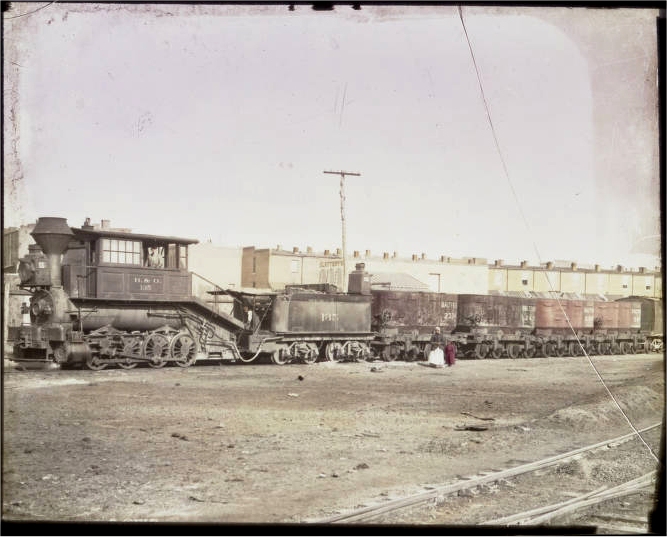This looks like a very silly place to put the cab of a locomotive- halfway down the boiler. But as usual, there was a very good reason for this apparent piece of whimsy.
These locomotives were used in areas of the USA where anthracite was plentiful. This sort of coal yields a lot of heat, but does it slowly, so a large firebox is required; so large that the driver cannot see round it. His cab was therefore placed on top of the boiler, though at first sight a cabforward design would have been more practical.

Above; Consolidated engine No 93, a tender camelback locomotive. Note the wide firebox- though the fireman does seem to have been given a small forward-looking window.

Above is an unusual machine- a camelback shunting loco with a tender. (Shunters are called switchers in the USA)
It looks as those these cabs would have been very cramped and uncomfortable. In summer however, it was probably a cooler place to be than the footplate.
 |
| Left: Baltimore & Ohio Winans Camel 0-8-0 No 111
This camelback was photographed on the Baltimore & Ohio Railroad. It appears to ne one of the Class Susquehanna designed by Ross Winans. More info here.
Unknown location, date, occasion. It looks like a load of broken stone.
|
 |
| Left: Baltimore & Ohio Winans Camel 0-8-0 No 135
B&O engine #135 was built by Ross Winans in 1853; it is seen here at B&O's yards at Mount Clare in Baltimore. It was taken out of service sometime before 1900.
|














